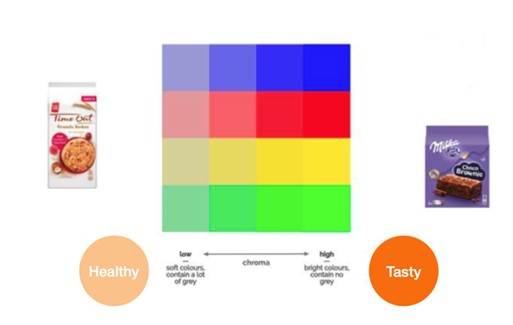A Matter of Taste: How Context Dramatically Influences What We Taste
Relevant topics Research, Archive
Taste is taste, isn't it? Well, not quite! What if I told you that the color, shape, and packaging of a product can significantly alter the way we perceive its flavor?
Imagine this: a vibrant, red soda can with a sleek, modern design. Your taste buds anticipate a bold and exciting, perhaps cherry-flavored experience. Now, picture that same drink in a plain, unadorned can. Suddenly, your expectations shift, and the taste seems more muted, subtle, or even unexpected. In this blog, we will uncover the secrets of how our senses collaborate with design, presentation, and surroundings to shape the way we taste things. Get ready to discover how the look and feel of a product can play a tantalizing role in the delightful dance of flavors on your palate.
The Legendary Wine Experiment
That context influences taste became perfectly clear in this legendary wine experiment. During this study, researchers asked a wine panel to describe and rate two wines: a white wine and a red wine. For the white wine they were given terms such as ‘Fresh’, ‘Citrus’, and ‘Floral’, whereas for the red wine the terms ‘Chocolate’, ‘Musk’, and ‘Round’ were used. Nothing extraordinary about that, so far.
However, as it turned out, the red wine was identical to the white wine, with the only difference being that the researchers had added odorless red food coloring. Simply by changing the color, the taste expectation changed and therefore also the taste experience. Surprising, right?
The Color of Taste
As you can conclude from the experiment above, color plays a significant role in shaping the taste of products. Nevertheless, the influence of color on taste extends beyond this. For example, the color pink has been shown to increase perceived sweetness. Researchers examined this by adding a pink color to distilled water with sucrose. They found that pink enhanced the perception of sweetness, while green did not have such an effect (Hidaka & Shimoda, 2014). Moreover, dark (vs. light) colored beer was found to enhance the bitterness perception while light (vs. dark) colored beer increased the perception of refreshment (Blackmore et al., 2021).
So far, we have covered the impact of specific colors on taste, but the saturation of colors can also alter it. More saturated colors are associated with tastiness, whereas less saturated colors are associated with healthiness. As a marketeer, you can make use of this principle in communication materials and packaging designs. Ever wondered why the chips department is so colorful? Well, exactly because of this. These brands want to activate associations with tastiness, and not necessarily with healthiness – but of course, there are exemptions.

The Shape of Taste
Shape affects taste and Cadbury is a brand that learned this the hard way. Years ago, they changed the shape of their chocolate bars. They made the corners round instead of angular. This might seem like a smart choice, as it saved them 4% chocolate on every bar. However, after changing the shape, complaints started pouring in. Loyal customers were disappointed that their beloved chocolate bars now tasted way creamier than before – something they didn’t like. Even though they had not adjusted the recipe!
As you can see, chocolate bar shapes influenced creaminess perception (Luri et al., 2021). This concept can be applied not only to the products themselves, but also on packaging. For example, yogurt served in a round shaped package will taste creamier than in an angular shaped package.
Looking for ways to increase sweetness? Then you might also benefit from using round shapes. Round shapes are associated with sweetness, which in turn can make the taste perception a bit sweeter. Next time you’re walking in a store, pay attention to the candy department. Smart brands will use round-shaped fonts for sweet candies and angular-shaped fonts for their sour counterparts.
It’s All in the Details
After these examples, we can conclude that taste is subjective and can be altered by many factors. In this article, we only covered shape and color, but there are more ways in which taste is influenced by external factors. In neuromarketing, it is important to pay attention to the tiniest details, including product shape, packaging shape, and packaging design, since it will all contribute to your product’s taste.
Take-Home Points
- Taste perception is not solely about the intrinsic flavors of a product; external factors like color, shape, and packaging can significantly alter how we perceive taste.
- Color plays an important role in shaping taste perception. Different colors can evoke specific taste expectations. Moreover, the shape of a product, whether it's the actual product or its packaging, can also influence taste perception.
- Paying attention to these subtle details, such as product and packaging design, is essential for a marketer. They all contribute to the overall taste experience of your product.

